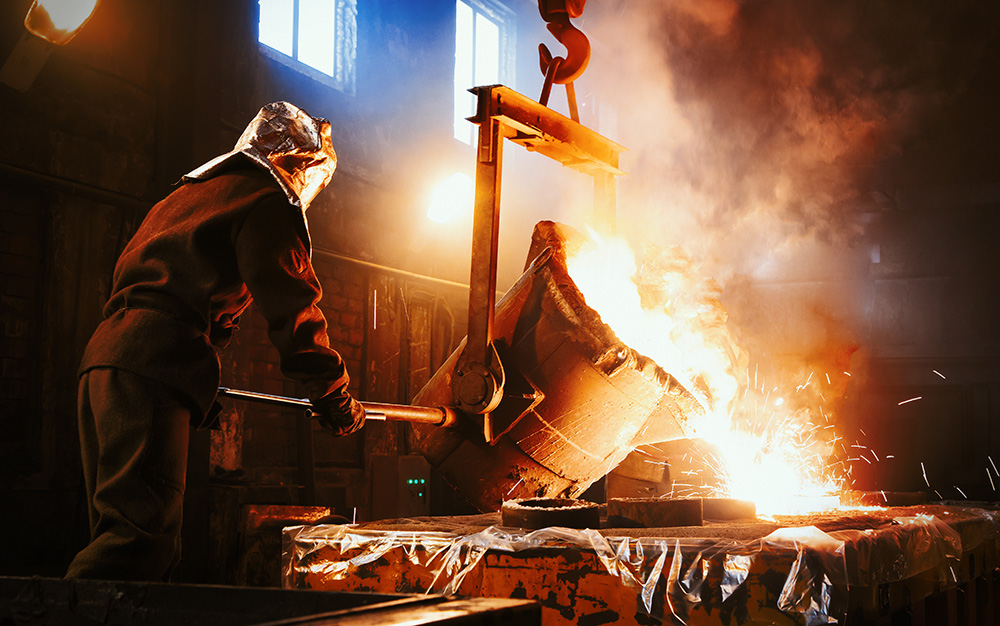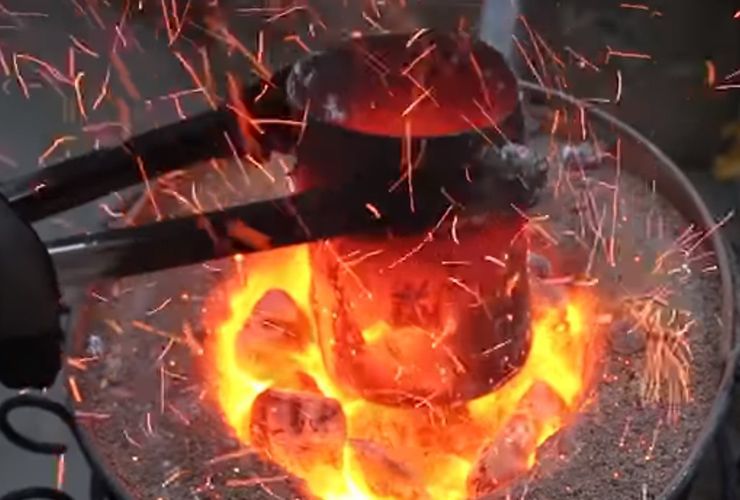Important distinctions between Metal Casting and other metal fabrication techniques
Discover the Cutting-edge Strategies Made Use Of in a Metal Foundry for Superior Casting Outcomes
In today's affordable production landscape, metal foundries are increasingly taking on cutting-edge techniques to boost casting outcomes - Aluminum Foundry. Advanced computer system simulations enable accurate modeling of molten metal actions, while 3D printing allows quick manufacturing of complex mold and mildews. Additionally, environmentally friendly materials and automation streamline operations. These developments guarantee significant renovations in efficiency and quality assurance. The effect of these modern technologies on sustainability and production methods continues to be to be fully discovered.
Advanced Computer Simulations in Metal Casting
Advanced computer system simulations have actually changed the metal casting procedure by improving accuracy and performance. These sophisticated devices allow designers to create digital models of actors components, enabling them to analyze and predict the actions of liquified metal during the casting phase. By imitating numerous specifications such as temperature level, circulation rate, and cooling rates, suppliers can determine possible defects before physical production starts.
This aggressive approach decreases waste and lessens costly mistakes, inevitably bring about boosted product high quality. Additionally, simulations promote the optimization of mold and mildew styles, guaranteeing that they fulfill the certain needs of each task. The combination of computational liquid dynamics (CFD) and finite aspect evaluation (FEA) further adds to the accuracy of these simulations, supplying understandings that were formerly unattainable. Because of this, progressed computer system simulations have actually become an essential part of modern metal foundries, substantially advancing the industry's capabilities.
3D Printing for Mold And Mildews and Patterns
3D printing has become a groundbreaking strategy for developing molds and patterns in the metal foundry industry. This technology enables the rapid production of complex geometries that standard manufacturing methods struggle to accomplish. By utilizing additive manufacturing, foundries can produce complex styles with reduced lead times and product waste. The ability to create molds as needed permits higher adaptability in style models, assisting in faster prototyping and alterations.
In addition, 3D printing can use a selection of products, consisting of steels and plastics, customized to specific casting demands. This versatility improves the precision of mold and mildews, causing remarkable spreading outcomes with boosted surface area coatings. Furthermore, the reduction in the number of components required streamlines assembly processes, additionally optimizing production performance. As foundries remain to embrace 3D printing, they are poised to redefine market requirements, leading the way for advancement and boosted efficiency in metal casting operations.
Eco-Friendly Materials and Processes
As the metal foundry market faces boosting pressure to lower its ecological footprint, the adoption of eco-friendly materials and procedures has become crucial. Factories are currently checking out lasting options to conventional products, such as utilizing recycled steels and bio-based binders. These materials not only reduce waste however likewise reduced power consumption during manufacturing.
In addition, innovations in sand casting methods have actually led to making use of synthetic sands that are less unsafe to the setting. Factories are additionally implementing ingenious processes like liquified metal treatment that decreases exhausts and enhances the top quality of cast items.
Additionally, water-based coverings have changed toxic solvents, promoting a more secure workplace (Aluminum Foundry). By incorporating these environmentally friendly techniques, metal foundries can markedly site link decrease their eco-friendly effect while maintaining high-grade spreading outcomes. This shift not only benefits the environment but likewise straightens with the expanding customer need for sustainable manufacturing remedies
Automation and Robotics in Foundry Workflow
While the metal foundry industry embraces technology, the integration of automation and robotics is changing operations substantially. Automated systems simplify processes such as mold and mildew making, metal pouring, and casting finishing, greatly improving effectiveness. Robotics assist in the handling of heavy products, lowering the danger of workplace injuries and making certain more secure environments.

Further, making use of automated directed automobiles (AGVs) maximizes product transportation within facilities, making sure timely delivery of elements to proper workstations. By implementing these modern technologies, foundries can adapt to changing demands with better agility, eventually leading to improved success and competition on the market. As automation and robotics remain to evolve, they hold the possible to redefine conventional foundry techniques and drive additional improvements in casting techniques.
Real-Time Surveillance and Quality Assurance Techniques
The innovations in automation and robotics have led the way for more sophisticated techniques to quality assurance in metal foundries. Real-time tracking systems use innovative sensors and information analytics to track vital criteria throughout the casting procedure. These systems constantly assess variables such as material, stress, and temperature level structure, enabling instant detection of variances from established criteria.
Quality control techniques currently incorporate artificial intelligence formulas that assess historical data to anticipate possible flaws before they happen. This positive technique minimizes waste and improves general production effectiveness. Furthermore, integrated responses loops permit fast adjustments, ensuring that each Continued spreading meets strict quality demands.
The implementation of electronic doubles-- virtual reproductions of physical properties-- has also reinvented high quality guarantee, allowing engineers to simulate and maximize procedures in real-time. Together, these cutting-edge strategies greatly boost the integrity and top quality of castings, setting brand-new market standards in metal foundry operations.
Regularly Asked Questions
What Kinds of Metals Are Frequently Cast in Foundries?
Generally cast steels in foundries consist of light weight aluminum, iron, bronze, and brass. Each metal shows distinct properties, making them suitable for numerous applications, such as automobile components, machinery, and imaginative sculptures, improving their versatility in production.

How much time Does the Casting Refine Commonly Take?
The casting procedure normally takes several hours to days, relying on aspects such as the intricacy of the mold, kind of metal utilized, and cooling needs. Each stage affects the overall period markedly.
What Precaution Are in Place for Foundry Employees?

Just how Are Defects in Castings Identified and Addressed?
Defects in castings are determined via aesthetic assessments and non-destructive testing techniques. When found, foundry employees resolve them by improving processes, adjusting material compositions, and implementing rehabilitative steps to assure top quality and conformity with standards.
What Is the Cost Array for Metal Casting Services?
The cost variety for metal spreading solutions generally ranges $1 to $10 per extra pound, depending upon elements such as content material type, complexity of the layout, and manufacturing volume, affecting total pricing considerably.
In today's affordable manufacturing landscape, metal foundries are significantly adopting cutting-edge techniques to improve casting results. As the metal foundry market deals with raising stress to lower its environmental footprint, the adoption of eco-friendly materials and procedures has actually come to be crucial. Foundries are currently discovering sustainable options to standard products, such as making use of bio-based binders and recycled metals. By incorporating these green practices, metal foundries can considerably reduce their eco-friendly impact while keeping high-grade spreading results. The developments in automation and robotics have actually led the means for more innovative techniques to top quality assurance in metal foundries.